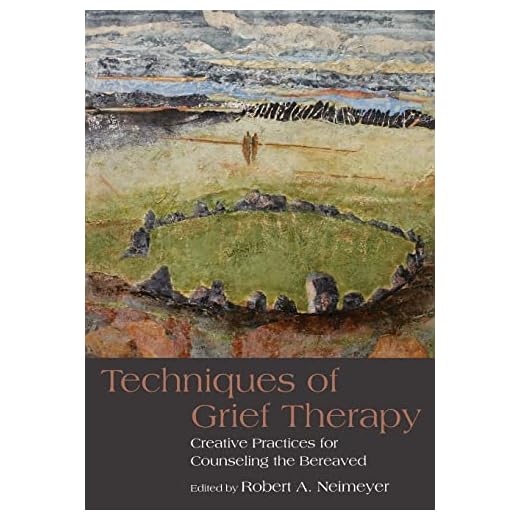In today's fast-paced world, finding moments of mindfulness can be a challenge. Embracing "The Power of Now"...

This guide offers a step-by-step approach to help individuals manage anxiety during therapy sessions, which can often arise when discussing personal issues. By outlining practical strategies, the guide aims to empower readers to cope with their feelings, fostering a more comfortable and productive therapeutic environment. These steps include techniques for relaxation, effective communication with the therapist, and self-reflection, all designed to enhance the overall experience and ensure that therapy remains a valuable tool for mental health improvement.



Acknowledge the feelings of anxiety as they arise. When you notice sensations of unease, pause for a moment. Take a deep breath and recognize that these feelings are a normal part of being human. Remind yourself that many people experience anxiety, and it's okay to feel this way. By validating your emotions, you can create a sense of acceptance that allows you to regain control over your thoughts and reactions.
Identify what triggers your anxiety during therapy sessions. Pay close attention to specific topics or situations that lead to heightened feelings of anxiety. Keep a journal to document these triggers, noting the circumstances and your emotional responses. This practice will help you gain insight into your anxiety patterns, making it easier to discuss them with your therapist. Understanding your triggers lays the groundwork for developing coping strategies and techniques to manage anxiety effectively.
Incorporate deep breathing exercises before and during your therapy sessions. Begin by finding a comfortable seated position, either in a chair or on the floor. Close your eyes or soften your gaze to minimize distractions. Inhale deeply through your nose for a count of four, allowing your abdomen to expand fully. Hold your breath for a count of four, then exhale slowly through your mouth for a count of six. Repeat this cycle for several minutes, focusing on the rhythm of your breath. Use this technique right before your session to settle your mind and prepare yourself emotionally.
During your therapy session, if you start to feel anxious or overwhelmed, pause to practice deep breathing. Gently raise your hand to signal your therapist that you need a moment. Take a slow, deep breath in for a count of four, hold it for another four, then exhale for a count of six. Visualize stress leaving your body with each exhale. This practice not only helps to calm your nervous system but also enhances your ability to engage in the therapeutic process. Use these moments of deep breathing to center yourself and create a safe space for expression.
Choose a quiet, comfortable space where you feel at ease. This could be a cozy corner in your home, a favorite chair, or a peaceful spot in nature like a park or garden. Ensure the area is free from distractions such as noise, clutter, or interruptions. Arrange your seating to promote relaxation—use cushions, a blanket, or anything that makes you feel comfortable.
Take a moment to sit down and close your eyes. Focus on your breathing; inhale deeply through your nose, hold for a few seconds, and exhale slowly through your mouth. Repeat this process several times, allowing your mind to clear and your body to relax. Visualize the upcoming conversation and set a positive intention for it. This practice will help you center yourself, creating a solid foundation for the discussion ahead.
Engage in grounding exercises by focusing on your physical sensations. Sit or stand comfortably and take a deep breath. Notice the weight of your body on the chair or floor. Feel your feet connecting with the ground. Pay attention to any areas of tension or relaxation within your body. Acknowledge these sensations without judgment.
Use the 5-4-3-2-1 technique to identify things you can see, hear, feel, smell, and taste. First, look around and name five things you can see. Then, listen closely and identify four things you can hear. Next, focus on your body and recognize three things you can feel, like the texture of your clothing or the temperature of the air. After that, identify two things you can smell, either present or from memory. Finally, recall one thing you can taste, such as the aftertaste of your last meal or drink. This technique helps anchor you in the present moment and reduces feelings of anxiety or overwhelm.
Reflect on the outcomes of each session immediately after it concludes. Identify specific moments that felt successful, whether it was speaking clearly, engaging with others, or managing your anxiety levels. Write down these instances in a journal, allowing your thoughts to flow freely. For example, if you felt calm during a presentation, note how you prepared beforehand or the breathing techniques you used. This practice of documenting positive experiences can reinforce your ability to replicate them in the future.
Analyze how you managed your anxiety to better understand your coping strategies. Did you take deep breaths, visualize a positive outcome, or remind yourself of past successes? Record these techniques alongside your reflections. For instance, if you found that taking a moment to breathe deeply before a stressful interaction helped center you, make a note of it. Over time, recognizing these patterns will build your confidence, making it easier to face future challenges with a more composed mindset.
In conclusion, managing anxiety during therapy is an essential part of the healing process that demands both practice and patience. By acknowledging your feelings, engaging openly with your therapist, and employing effective coping techniques, you can enhance your therapeutic experience and foster personal growth. Embrace your anxiety as a natural aspect of the journey, and remember that seeking strategies to cope with it is a testament to your resilience and commitment to self-improvement.
In today's fast-paced world, finding moments of mindfulness can be a challenge. Embracing "The Power of Now"...
In our fast-paced world, finding moments of tranquility can be a challenge. Meditation apps offer a convenient...
In our fast-paced world, taking time for self-reflection and mindfulness is essential for well-being. Journaling can be...
In today’s fast-paced world, managing stress has become an essential aspect of maintaining overall well-being. Two popular...
Dissociation can be a challenging experience, especially the one that happens at work. Are you experiencing dissociation?...
Bionic reading transforms the reading experience for ADHD individuals by guiding the eyes for focus and understanding. Dive into the world of bionic reading.
Explore the complexities of postpartum depression and genetics in our blog 'Is Postpartum Depression Hereditary?' for insights into maternal mental health.
